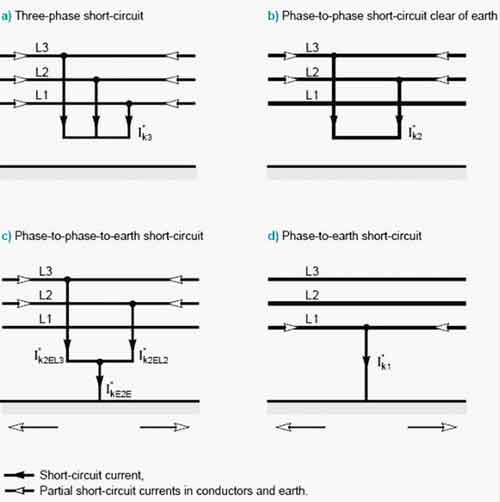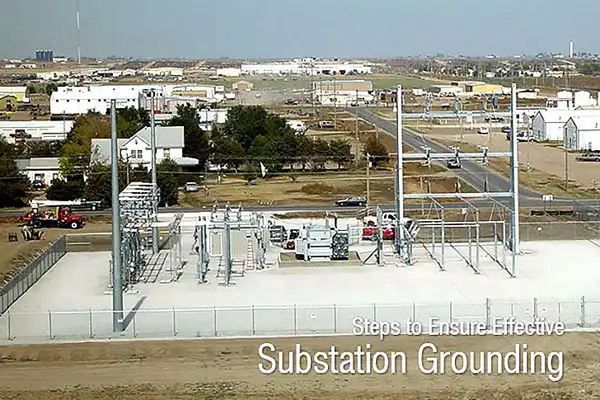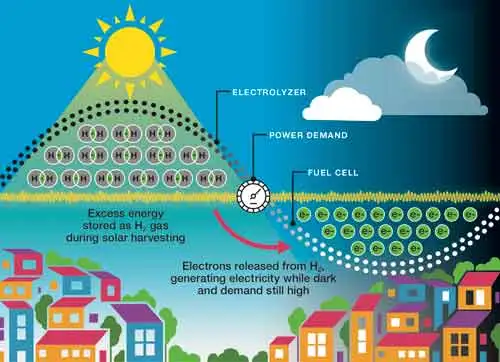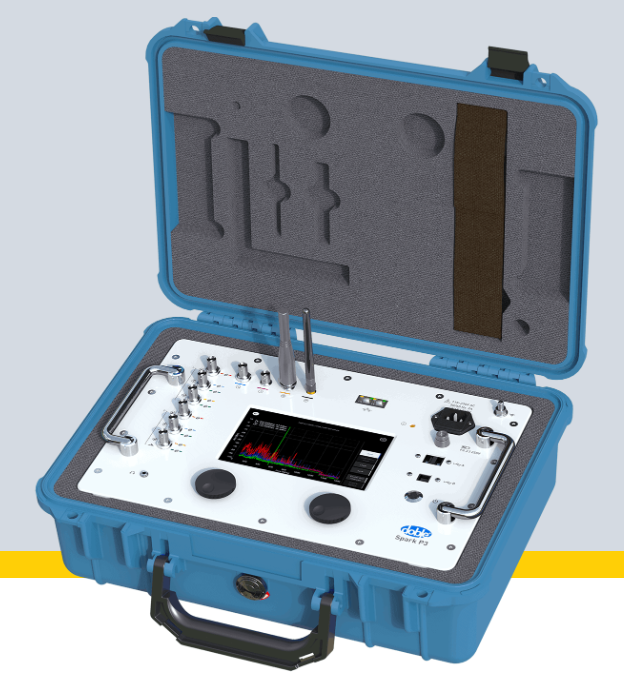Do Short Circuit Calculations Vary with Power Factor and Voltage? Power Quality Explained

Substation Grounding Training
Our customized live online or in‑person group training can be delivered to your staff at your location.

- Live Online
- 12 hours Instructor-led
- Group Training Available
Download Our OSHA 3075 Fact Sheet – Understanding Electrical Hazards in the Workplace

- Learn the effects of electric current on the human body
- Understand OSHA safety standards and protective devices
- Discover essential lockout/tagout and grounding practices
Do Short Circuit Calculations Vary with Power Factor and Voltage? Power factor and voltage changes can alter fault current values, impacting equipment ratings and overall system protection strategies.
When designing and analyzing electrical systems, performing accurate short circuit calculations is essential to ensure the system’s safety and efficiency. Two key variables that can impact the outcome of these calculations are power factor and voltage. Understanding how these factors interact is important for engineers and technicians working on power systems, particularly in industries where the stability and reliability of electrical networks are crucial. This article will examine the relationship between power factor, voltage, and short-circuit analysis, addressing common questions about their impact on system calculations.
Power Quality Analysis Training
Request a Free Power Quality Training Quotation
How Does Power Factor Affect Short Circuit Calculations?
The power factor represents the phase difference between the voltage and current in an AC electrical system. It is expressed as a ratio, with a perfect power factor being 1 (or unity), meaning that all the power is being used effectively. However, many electrical systems operate with a power factor lower than 1 due to the presence of inductive or capacitive loads, which introduce inefficiencies in power usage.
When calculating short circuits, the power factor plays a significant role in determining the fault current. A lower power factor typically indicates a larger reactive component in the system, which can reduce the overall magnitude of the current flowing during a fault. Conversely, a higher power factor indicates that more of the current is in phase with the voltage, potentially resulting in a higher fault current.
For example, in a system with a 60 Hz frequency, a power factor close to unity would result in a higher current during a fault condition compared to a system with a low power factor. Therefore, adjusting the power factor in the calculations is necessary to obtain accurate results, as the fault current may vary depending on this variable.
Electricity Today T&D Magazine Subscribe for FREE

- Timely insights from industry experts
- Practical solutions T&D engineers
- Free access to every issue
Does Voltage Impact the Outcome of Short Circuit Calculations?
Voltage is another crucial factor that directly influences short circuit analysis. The relationship between voltage and current during a fault is governed by Ohm’s Law, where the fault current is inversely proportional to the system impedance. A higher system voltage typically results in a higher fault current, assuming the impedance remains constant.
In practical terms, this means that systems operating at higher voltage levels, such as 11kV or 33kV, will generally experience larger fault currents than lower voltage systems like 240V or 480V. This is important because the calculation of fault current is used to determine the appropriate sizing of protective devices, such as fuses and circuit breakers. Incorrect calculations, which fail to account for the impact of voltage, can result in undersized or oversized protective equipment, thereby putting the system at risk of failure.
In summary, voltage must always be considered when performing short circuit calculations to ensure that all protective equipment is properly rated for the expected fault conditions.
What Role Do Power Factor and Voltage Play Together in Short Circuit Calculations?
Both power factor and voltage work together to influence the results of short circuit calculations. The interaction between these two variables affects the system’s overall impedance, which in turn dictates the magnitude of the fault current.
For example, in a low-power-factor system with high voltage, the fault current may be lower than expected due to the increased presence of reactive components, even though the voltage is high. Conversely, in a high-power-factor system, high voltage may result in significantly higher fault currents because there is less reactive opposition to the flow of current.
To illustrate this further, consider a 60 Hz power system where both voltage and power factor fluctuate. In this scenario, an engineer must account for the influence of both variables to ensure that protective devices are adequately rated for the maximum potential fault current that may occur. Failing to account for the combined effects of voltage and power factor can lead to inaccurate conclusions about the system’s safety and performance under fault conditions.
Are Short Circuit Calculations More Complex with Varying Power Factors?
Yes, short circuit calculations become more complex when the power factor varies. This is because a lower power factor introduces additional reactance into the system, which complicates the process of determining the total system impedance. Impedance is composed of both resistive and reactive elements, and as the power factor deviates from unity, the reactive component becomes more pronounced.
In practical terms, this means that engineers must perform more detailed impedance calculations to accurately predict the fault current. For systems with fluctuating loads, where the power factor can vary throughout the day or under different operational conditions, it is critical to model these changes accurately to ensure proper protection.
As a result, performing short circuit calculations in systems with varying power factors requires careful consideration of both the load characteristics and the system's operational profile. This ensures that all potential fault scenarios are accounted for and that protective devices are appropriately rated.
How Do Low or High Voltage Systems Affect Short Circuit Calculations?
Low-voltage and high-voltage systems have distinct implications for short-circuit analysis. In low-voltage systems, the fault current tends to be lower, as the voltage is a direct factor in determining the magnitude of the fault current. However, low-voltage systems may have higher fault currents if the system impedance is particularly low.
Sign Up for Electricity Forum’s Power Quality Newsletter
Stay informed with our FREE Power Quality Newsletter — get the latest news, breakthrough technologies, and expert insights, delivered straight to your inbox.
On the other hand, high-voltage systems typically experience much larger fault currents. This is due to the higher voltage, which, when combined with lower system impedance, results in a greater amount of energy being released during a fault. Because of this, high-voltage systems require more robust protective equipment and more detailed short-circuit calculations to ensure that fault conditions are accurately modelled and addressed.
Performing accurate short circuit calculations is crucial for ensuring the safe operation of electrical systems. Both power factor and voltage play essential roles in determining the magnitude of fault currents and must be carefully considered during the analysis process. Variations in power factor can complicate calculations, while voltage directly impacts the potential energy released during a fault.
Understanding how these two variables interact enables engineers to perform more accurate short-circuit calculations and ensures that protective devices are appropriately sized. Whether dealing with low-voltage or high-voltage systems, it is vital to account for both power factor and voltage to ensure the system’s reliability and safety.








